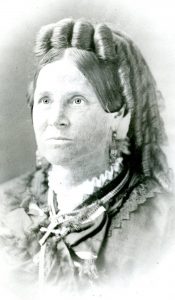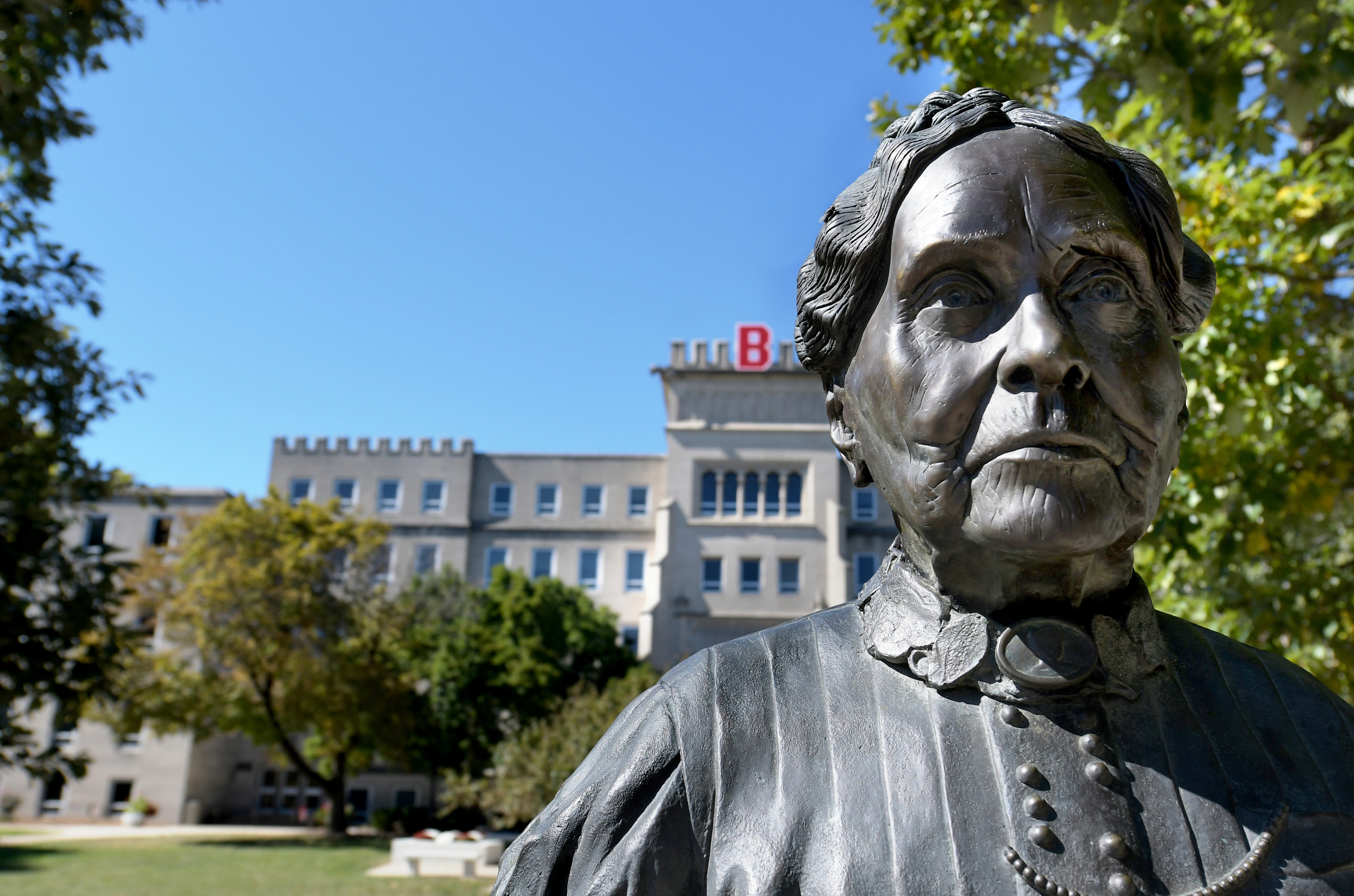Lydia Moss Bradley left a local mark like arguably no other.
Some 125 years since Lydia Moss Bradley established her Bradley University, the school continues to cultivate seeds of knowledge in its students with professors who care about their health and future, and with courses that allow them to develop a strong work ethic and versatile skill sets tailored to their majors.

Those were Lydia’s goals, but more than anything, she wanted to foster independence in Bradley students.
Now that Bradley is coming up on this milestone anniversary, it’s appropriate to reflect on Lydia’s life story as a wealthy philanthropist and pioneer for women’s rights.
Lydia Moss Bradley was born in Vevay, Indiana in 1816, the youngest of six children to Zeally Moss and Jenny Glasscock. At 22, her father served as a captain in the Revolutionary War, supplying soldiers with material necessities. At war’s end, he moved to Kentucky, where he realized that he did not wish to be a slave owner. He freed the slaves he had and moved to the newly established state of Indiana, where he became wealthy as an owner and seller of land.
Lydia’s life in Indiana, however, was a humble one. She attended a makeshift school set up in her teacher’s kitchen. She had to make do with what supplies were available and improvise where needed. Regardless, she learned many valuable skills common for girls living on the frontier, including butter churning, weaving and meat preserving.
Around 1830, Lydia made her first ventures into the world of real estate. She traded a horse her father had gifted to her for a forested plot of land. She then chopped down the trees and sold her logs to her future husband, Tobias Bradley. He was not nearly as rich as Lydia, but at age 18 he entered into an apprenticeship under Judge Malin, who educated and introduced him to the world of business.
Eventually, Tobias and Lydia began a relationship. On May 11, 1837, they married. They started their family in Vevay, where Lydia gave birth to her first child, Rebecca. All was well for a time. After her father Zeally’s death in 1839, Lydia and Tobias found a new place to live, but not before tragedy struck the family. Rebecca died at age 5 from unknown causes. Little did the Bradleys know that this was only the beginning.
In 1847, they moved to Peoria at the request of Lydia’s brother, William. By this point, they had collected a great deal of wealth from selling their farm and receiving a gift of gold from Lydia’s grandfather. They used the money to buy a plot of land, which included the future site of Bradley’s campus. During their time in Peoria, the Bradleys met Abraham Lincoln.
Alas, more devastation was to befall the Bradley family. Their eldest son, Tobias Jr., died, as did their second daughter, Clarissa. At the time, Lydia was pregnant with a third daughter, Laura. Despite their personal misfortunes, they still found much to look forward to in Peoria.
Tobias and William worked together on a number of projects, including Moss-Bradley & Company, a successful distillery. Unfortunately, at the height of their success, tragedy struck the family once more. Lydia lost another daughter, Mary, and her second son, William, before either had reached the age of 2. Her last surviving child, Laura, would later die from illness at age 14. Lydia Moss Bradley outlived all six of her children.
Tobias, meanwhile, deeply invested himself in his professional affairs to cope with the loss of his last child. The Civil War was coming to an end, but President Lincoln’s assassination hit the family hard. In 1867, Tobias was in a carriage accident and, after sustaining severe brain injuries, he too died. Lydia was completely alone.
Remarkably, Lydia Moss Bradley stayed strong, dedicating the remainder of her life to using her immense resources for good. In 1997, she created Bradley Polytechnic Institute—now Bradley University, of course—as a memorial to her husband and children, working with many people to make that dream come to life.
“Lydia Moss Bradley has had a remarkable influence on Peoria. She founded Bradley University to serve the needs and interests of students at the time, and 125 years later, that is still our mission today,” said BU President Stephen Standifird, Ph.D. “She also gave generously to the Peoria area, including land that helped establish the first park district in Illinois, as well as land to build the hospital that would become OSF Saint Francis Medical Center. Those are just two of the many gifts Lydia gave to benefit the citizens of Peoria.”
Indeed, Lydia Moss Bradley was utterly dedicated to her adopted hometown, in addition to being a pioneer for women nationwide. She was the first female in America to sit on a national bank board, at the First National Bank of Peoria. She built Peoria’s Home for Aged Women, which cared for the community’s widows. Her gifts helped construct Peoria’s Universalist Church. Remarrying after her first husband’s death, she was among the first women in the nation to draw up what is now known as a prenuptial agreement to protect her personal assets.
“Decades before Illinois women could participate fully in the political process, Lydia Moss Bradley was carefully managing a multi-million dollar real estate and banking empire in central Illinois,” said Amy Scott, Ph.D., associate professor of history and director of the Women’s and Gender Studies program at BU. “Working from her home on Moss Avenue, Mrs. Bradley oversaw the development of significant rural acreage in central Illinois for agricultural production. She also grew her wealth by subdividing portions of her property on Peoria’s West Bluff into some of the city’s first prominent neighborhoods.
“As a major stockholder in Peoria’s First National Bank, she gained a seat on the Board of Directors and actively participated in guiding the bank’s investments. Managing her capitalist ventures was Mrs. Bradley’s forte; community development through philanthropy was her passion. Mrs. Bradley was Peoria’s most generous benefactor. She gained the respect and admiration of her contemporaries and built a formidable legacy.”
Lydia Moss Bradley died in 1908 at age 91. She is buried in Peoria’s Springdale Cemetery alongside her first husband and all six children, among other family members.
For all that and more, Lydia Moss Bradley would be elected to the National Women’s Hall of Fame, 90 years after her death.
All in all, Lydia Moss Bradley was an amazing woman who persevered through incredible tragedy to bring forth an institution that would shape Peoria’s future, and continues to. In so many ways, she has proved an inspiration, to Bradley students and beyond, to keep going no matter the odds.
The information for this story was gleaned from Forgotten Angel: The Story of Lydia Moss Bradley by Allen A. Upton; from the National Women’s Hall of Fame and from the History of American Women, Lydia Moss Bradley, April 18, 2013.





